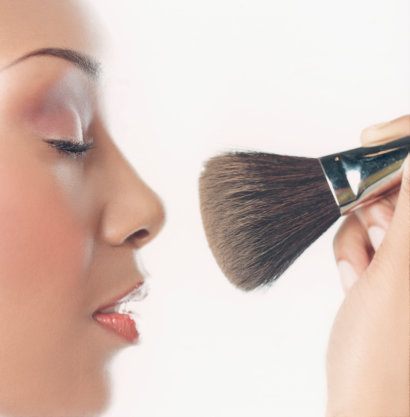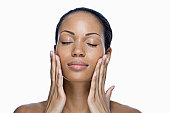News
STOP!!!
 Before you slather on your foundation, check below to see if this applies to you.
Before you slather on your foundation, check below to see if this applies to you.
It’s a vicious cycle, you wear makeup to cover up your blemishes, only for you to take it off and discover more blemishes!! If this is a normal situation for you as it for at least 30% of all cosmetics users, then you might have what is known as Acne Cosmetica, a type of Acne caused by cosmetic products.
What is Acne Cosmetica? and what causes it?
Acne Cosmetica or Cosmetic acne, is a very persistent form of acne that appears in the form of “small bumps” predominately on the scalp, hairline, neck and face.
There are four main culprits of Acne: 1) Overactive oil glands, 2) Blockage of the skin pores, 3) skin bacteria, and 4) Inflammation. Oil glands, also known as sebaceous glands are designed to produce oil; however due to some hormonal imbalance, the oil glands become overactive and enlarges, producing oily skin. Acne then occurs when the pores, from which oil flows, becomes blocked. Blockage of the pores is usually caused by bad hygiene, and in the case of cosmetic acne, by the use of comedogenic or “pore blocking” ingredients in beauty products.
Cosmetic acne can also be caused by skin bacteria on makeup brushes and applicators. Your skin has a normal bacterium known as Propionibacterium acne, that helps protect the skin from harmful bacteria; but when oil, dirt and bacteria gets trapped in your pores, this bacteria will grow in the blocked pore causing skin irritation and inflammation. Such inflammations are usually characterized by swelling, discomfort, and redness.
Since the skin has a hard time dealing with its own oil, applying artificial oil from cosmetics makes it worse, that is why individuals with relatively normal skin can suddenly breakout in pimples while using certain cosmetics products.
If you know that you suffer from cosmetic acne, the first step in treating this problem is to find out what comedogenic product might be causing this. If you notice breakouts along the hairline and forehead region, the your hair products might be at fault, if you break out on your upper cheeks, then it might be your blush; while breakouts throught the face and neck might be as a result of comedogenic face creams, and foundations.
What can I do??
 If your Hair and Beauty products are causing you to breakout, be sure to do the following:
If your Hair and Beauty products are causing you to breakout, be sure to do the following:
1. Stay CLEAR from Comedogenic or “pore-clogging” products, such as those that contain: mineral oil, cocoa butter, stearic acid, Lanolin, isopropyl isothermal, putty stearate, isostearyl neopentonate, myristyl myristate, decyl oleate, octyl sterate, octyl palmitate and isocetyl stearate, laureth 4, isopropyl myristate or acetylated lanolin, and PPG myristyl propionate.
2. Choose products labeled “Non-comedogenic”.
3. Be aware, “Oil-free” does not necessarily mean “Oil-free”; Many cosmetic manufacturers now substitute chemicals that come from synthetic sources such as animal, vegetable and mineral oil. So be sure to read your makeup label to note what kind of oil it contains.
4. Be sure to frequently clean your makeup utensils: bacteria often gets trapped in your foundation pad and brushes, be sure to wash them frequently or switch to disposable ones. Also use Isopropyl alchohol while cleansing them.
5. Avoid Liquid makeup and stick to powder based ones. This is because most liquid makeup are oil-based.
6. Wear Less makeup or None, every once in a while- One of the best things you can do for your skin is to leave it bare. Give yourself a facial at least once a month, go bare-faced in the weekends and just allow your pores to breath.
7. Avoid SLEEPING in your makeup- This is a MUST-DO, regardless of how tired you are at the end of the day, make sure you wash your face. Invest in some disposable facial wipes if you must!


























